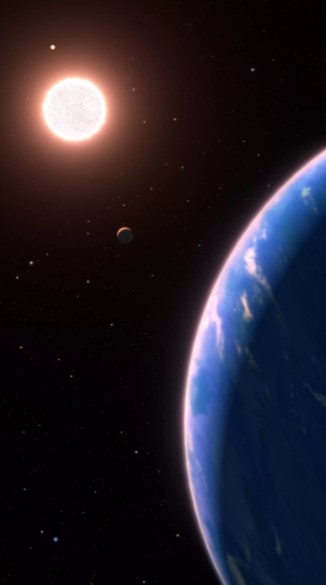Scientists have made an exciting breakthrough using the James Webb Space Telescope, discovering a unique planet unlike anything seen before. Named GJ 9827 d, the planet is primarily made of hot water vapor, earning it the classification of a “steam world.” This discovery, led by a team from the University of Michigan, is significant because it’s the first time astronomers have observed a planet with an atmosphere made of heavier molecules, similar to Earth, rather than the lighter elements like hydrogen and helium found in gas giants.
The planet, about twice the size of Earth, is located 100 light years away, and while it cannot host life as we know it, its atmosphere opens up new avenues for studying planets with potential for habitability. Researchers had long hypothesized the existence of “steam worlds” but were unable to prove their existence until now, thanks to the capabilities of the James Webb Space Telescope.

The discovery is seen as a huge leap forward in the understanding of exoplanetary atmospheres. Caroline Piaulet-Ghorayeb from the University of Montreal explained that GJ 9827 d’s atmosphere provides crucial data that could aid in the detection of habitable planets in the future. Ryan MacDonald, a NASA Sagan Fellow, added that this marks a vital step towards uncovering atmospheres on other small, mysterious planets.
This latest find has scientists eagerly questioning what other unseen wonders might still be out there, further fueling curiosity about the hidden realms of space. The discovery of GJ 9827 d suggests there may be many more unique planetary systems waiting to be explored.




